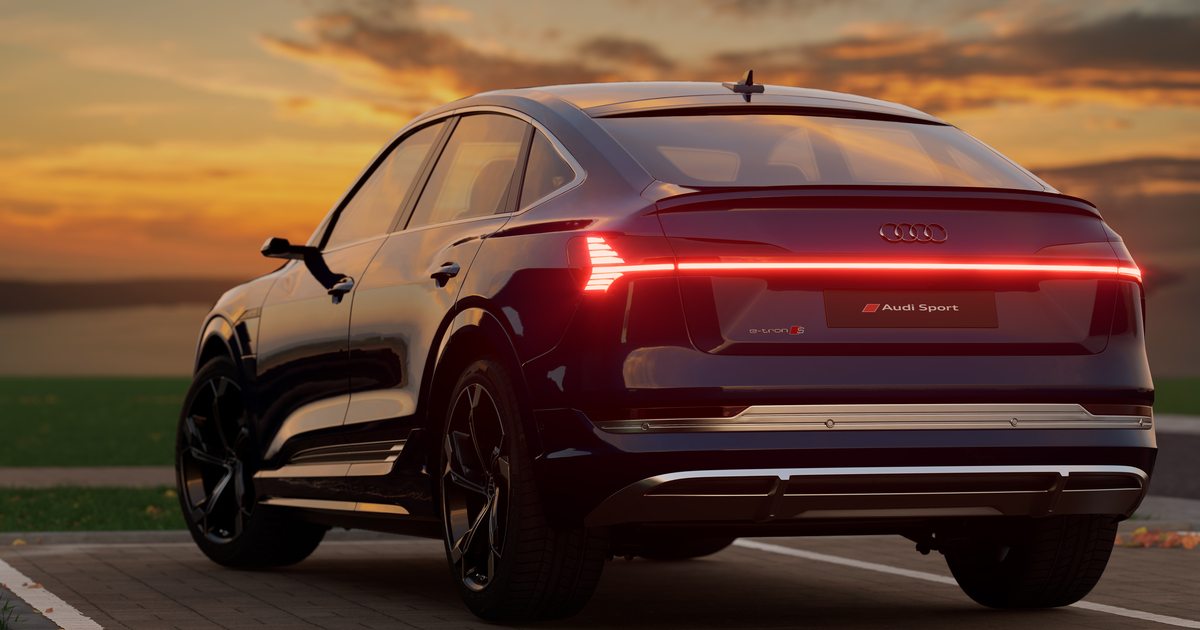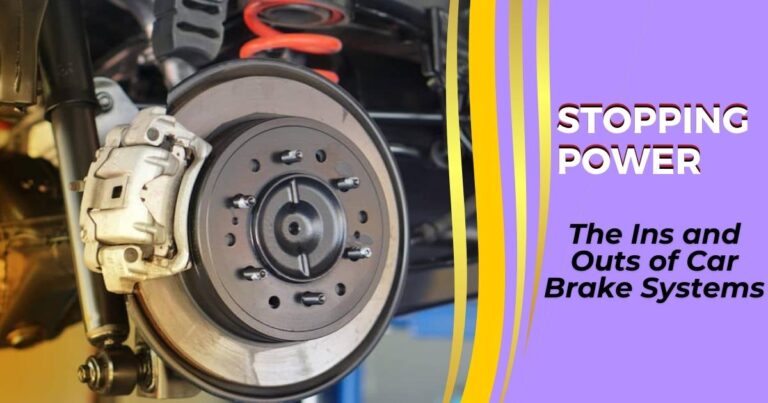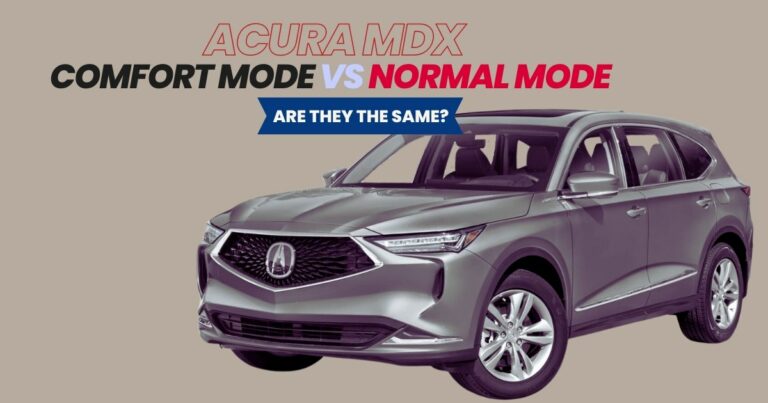Exploring the Future: A Deep Dive into Electric Cars
Over the past few years, the automotive industry has witnessed a monumental shift driven by the rising tide of sustainable practices. At the forefront of this transformative wave are electric cars, which mark a departure from traditional combustion engines to cleaner and environmentally friendly vehicles.
As concerns about climate change and environmental impact intensify, electric cars have continued to gain relevance in the global landscape. Governments, industries, and consumers alike are recognizing the need to embrace cleaner alternatives, and electric cars stand as a key player in this pursuit.
In this guide, we’re going to take a close look at what the future holds for electric cars. We’ll also explore various aspects that contribute to their growing significance, future trends, and potential challenges.
Evolution of Electric Cars
The first electric car is believed to have been invented sometime between 1832 and 1839. This marked the initial spark in the development of what would become a reliable mode of transportation. However, it was not until the late 19th and early 20th centuries that electric cars gained popularity among urban dwellers for their quiet and clean operation.
The 21st century brought about a surge in innovation with the introduction of lithium-ion batteries, which revolutionized the range and efficiency of electric cars. Companies like Tesla were at the forefront, showcasing how electric cars would be both environmentally friendly and high-performance.
Despite these advancements, electric cars faced challenges and skepticism that initially slowed widespread adoption. Concerns about limited driving range, charging infrastructure availability, and high battery costs created doubt among consumers. The perception of electric cars as impractical or lacking in performance also hindered their acceptance.

Overview of Current Electric Cars
The electric car market is currently experiencing a transformative phase, characterized by substantial growth and heightened consumer interest. As the global appetite for sustainable transportation continues to rise, electric cars have transitioned from being niche alternatives to mainstream choices. Governments and automakers worldwide are strategically aligning their efforts to cater to the growing demand for eco-friendly vehicles.
In the early 1990s, there were efforts to promote fuel-efficient, lower-emission vehicles, which pushed for the development of zero-emission vehicles, including electric cars. Although they faced a setback due to a campaign by automakers discrediting the idea, the landscape changed with the advent of breakthrough technologies.
Tesla Motors was one of the first automakers to take a significant step forward by designing the Tesla Roadster in 2008. This highway-legal all-electric car not only utilized lithium-ion battery cells but also marked the first electric vehicle to travel over 320 km (200 miles) per charge.
Beyond Tesla, the Mitsubishi i-MiEV’s groundbreaking entry into the market marked a significant milestone in the evolution of electric vehicles. Introduced in 2009, this car holds the distinction of being one of the first highway-legal electric vehicles.
On the other hand, the Nissan Leaf quickly emerged as a stiff competitor, surpassing the i-MiEV and claiming the title of the best-selling all-electric car. Generally, this period saw a resurgence in electric vehicle manufacturing, driven by battery advancements, a commitment to reducing greenhouse gas emissions, and an emphasis on improving urban air quality.
One aspect that has contributed to the current state of electric cars is the remarkable progress in battery technology. Lithium-ion batteries have become the industry standard, which results in enhanced electric car ranges.
The expansion of charging infrastructure is another crucial development. There has been a collaborative effort to establish a comprehensive network of charging stations, making electric cars more accessible and convenient. Rapid charging technologies are also gaining traction with the aim of reducing the time required to charge electric vehicles.
The global stock of electric vehicles has grown steadily since 2010. In addition, the sales of passenger electric vehicles have shown a notable shift away from gas-powered vehicles. In the third quarter of 2021, the Alliance for Automotive Innovation reported that electric vehicle sales in the U.S. reached six percent of all light-duty automotive sales, marking the highest volume ever recorded.
This represents an 11% increase in sales, compared to a 1.3% increase in gasoline and diesel-powered units. Far away from the U.S., the global landscape for electric cars is evolving rapidly. Electric companies in the Middle East, such as Mays Motors and Turkey’s Togg, are also making strides in designing and producing electric cars.
Technological Innovations and Terminologies
Battery (All-Electric Auxiliary)
An all-electric auxiliary battery is a type of rechargeable battery that’s primarily used to power electric vehicles. The battery is characterized by high energy density and long cycle life, and it serves a critical role in supplying power to various vehicle accessories.
Charge Port
The charge port is an essential component that allows an electric vehicle to connect to an external power supply for recharging. The port acts as the gateway for replenishing the energy stored in the traction battery.
Charging Infrastructure
Charging infrastructure refers to the network of charging stations and related facilities that support the charging of electric vehicles. The charging stations are connected to the electrical grid to obtain the energy needed for recharging.
DC/DC Converter
A DC/DC converter is an electronic device that converts the DC voltage from one level to another. This is crucial for electronic systems and applications that operate at different voltage levels. For instance, the converter is used to convert higher-voltage DC power from the traction battery pack into the lower-voltage DC power required for running vehicle accessories.
Electric Traction Motor
An electric traction motor is a type of electric motor specifically designed to propel electric vehicles. The motor is integrated into the electric system, which allows for precise control of acceleration, deceleration, and overall vehicle dynamics.
Onboard Charger
The onboard charger of an electric vehicle helps to convert incoming AC into DC power suitable for charging the traction battery. Additionally, the charger communicates with charging equipment to monitor battery characteristics such as voltage, current, temperature, and state of charge.
Thermal Management (Cooling)
Thermal management is a critical aspect of electric vehicles. Electric traction motors generate heat during operation, especially during periods of high power demand. Air and liquid cooling are often used to maintain the motor within an optimal temperature range.
Transmission
Most electric vehicles use a single-speed transmission, but some do not have a transmission at all. This is because electric motors provide a wide range of torque across different speeds, eliminating the need for multiple gears. Unlike traditional transmissions found in internal combustion engine vehicles, the electric transmission optimizes the delivery of power in a manner that suits the characteristics of electric propulsion.
Autonomous Driving
Autonomous driving, also known as self-driving or driverless technology, refers to the capability of a vehicle to operate without direct human input. Instead of relying on a human driver, autonomous vehicles use a combination of sensors, including cameras, radar, lidar, and ultrasonic sensors to perceive their environment and make decisions about their movements.
Vehicle-to-Grid (V2G)
Vehicle-to-grid (V2G) is a technology that enables electric vehicles to interact with the electrical grid. This feature allows the vehicle to not only consume electricity but also send excess energy back to the grid. The bidirectional energy flow opens up new possibilities for grid management, energy storage, and the integration of renewable energy sources.
Connectivity
The rise of electric cars goes hand in hand with the integration of connectivity and sophisticated software systems. Electric vehicles are becoming more than just modes of transportation – rather they are evolving into connected platforms. As such, real-time data exchange, over-the-air updates, and seamless integration with smart devices are becoming standard features.
Notable Electric Car Models
Several car brands have since ventured into the electric car field, and this has contributed to the growing popularity and acceptance of electric vehicles. However, by December 2019, Tesla had solidified its position as a leading electric vehicle manufacturer. Some of the successful models that have contributed to its success and recognition include;

Tesla Model 3
Known for its affordability and impressive range, the Tesla Model 3 has become one of the most popular electric cars globally. This electric vehicle quickly gained attention for its sleek design, performance, and technology features.
Tesla Model S
The Tesla Model S is recognized for its high-performance capabilities, long-range capabilities, and cutting-edge technology features. The Model S supports various charging options, including home charging, destination charging, and the Tesla Supercharger network.
Tesla Model X
Tesla’s Model X is an all-electric SUV featuring distinctive falcon-wing doors. It offers impressive acceleration, long-range options, and advanced safety features.
Tesla Model Y
The Model Y is Tesla’s compact SUV, sharing a platform with the Model 3. It combines the efficiency of a sedan with the versatility of an SUV.
Other notable models by the world’s leading all-electric vehicle manufacturers include;
Nissan Leaf
The Nissan Leaf is an all-electric compact hatchback produced by Nissan. As a pioneering electric vehicle, the Leaf operates solely on electric power, featuring various battery configurations to provide different driving ranges.
Chevrolet Bolt EV
Chevrolet’s Bolt EV is a compact electric car with a relatively affordable price tag and a competitive range. It has gained attention for its spacious interior, modern technology, and distinctive design.

Audi e-tron
The Audi e-tron is an all-electric luxury SUV produced by the German automaker. The e-tron lineup aims to combine Audi’s traditional sophistication with electric power.
Porsche Taycan
The Porsche Taycan is a high-performance electric sports sedan that has garnered praise for its impressive acceleration, handling, and luxury features. It represents Porsche’s entry into the electric vehicle market.
Rivian R1T and R1S
Rivian has gained attention for its R1T electric pickup truck and R1S electric SUV. These models are among the first to showcase Rivian’s innovative electric platform, which includes a large battery pack and electric motors.
Ford Mustang Mach-E
The Mustang Mach-E draws inspiration from the classic Mustang muscle car but reimagines it as a modern and stylish electric SUV. It offers a blend of performance, style, and practicality.
Future Trends in Electric Cars
The trajectory of electric cars is intertwined with a dynamic canvas of cutting-edge technologies that contribute to the evolution of sustainable and intelligent mobility. Some of the key advancements that are poised to redefine the landscape of electric vehicles include;
Solid-State Batteries
Solid-state batteries represent a next-generation battery technology that’s anticipated to revolutionize electric cars. These batteries are still in the developmental stage, but are expected to offer higher energy density, faster charging times, and enhanced safety.
Extended Range and Faster Charging
The pursuit of longer driving ranges and faster charging capabilities remains a key focus for the future of electric cars. Advancements in battery technology coupled with improved charging infrastructure, are expected to push the boundaries of electric vehicle capabilities and, consequently, their widespread adoption.
Vehicle-to-Everything (V2X) Connectivity
The integration of electric cars into the broader smart infrastructure is gaining momentum through Vehicle-to-Everything (V2X) connectivity. This technology ushers in an era of intelligent and interconnected transportation by enabling communication between vehicles infrastructure and the power grid. Electric cars equipped with V2X capabilities can contribute excess energy back to the grid, participate in demand response programs, and communicate with traffic management systems.
Advanced Driver Assistance Systems (ADAS) and Autonomy
The evolution of electric cars coincides with advancements in Advanced Driver Assistance Systems (ADAS) and autonomous driving technologies. Manufacturers are actively working on autonomous vehicles with a focus on improving safety, efficiency, and transportation accessibility. Future electric vehicles are expected to feature increasingly sophisticated ADAS and autonomous capabilities.
Sustainable Materials and Manufacturing
The future of electric cars is not only about the technology under the hood but also about sustainable practices in materials and manufacturing. Automakers are exploring eco-friendly materials, recycling processes, and energy-efficient manufacturing techniques to reduce the environmental impact of electric vehicle production.
Integration of AI and Machine Learning
Artificial Intelligence and machine learning are poised to play a critical role in the future of electric cars. From optimizing battery performance to enhancing predictive maintenance and personalizing the driving experience, AI technologies are expected to bring unprecedented levels of intelligence to electric vehicles. This integration aims to make electric cars more adaptive, efficient, and user-friendly.
Potential Challenges of Electric Cars
The rapid evolution of electric cars is not without its share of challenges. Some of the current hurdles faced by electric vehicles include;
Range Anxiety
Range anxiety refers to the fear or concern that drivers of electric vehicles may experience regarding the limited driving range on a single battery charge. One of the primary causes of range anxiety is the perception that electric vehicles have a more limited range compared to traditional gasoline vehicles. While EV ranges have been increasing with advancements in battery technology, some drivers may still perceive them as insufficient for their needs.
Limited Charging Infrastructure
The availability and accessibility of charging infrastructure pose challenges, especially in regions where charging stations are scarce. Limited access to charging points not only inconveniences electric vehicle users but also acts as a deterrent to potential adopters. Electric vehicles depend heavily on the availability and reliability of charging infrastructure. In areas where charging stations are sparse or unreliable, users may face difficulties maintaining their cars.
Charging Time
Although charging infrastructure is expanding, the charging time for electric vehicles remains longer than refueling a traditional internal combustion engine vehicle. This can inconvenience drivers, particularly on long journeys.
Battery Technology
Advancements in battery technology are crucial for improving energy density, reducing costs, and addressing environmental concerns. The weight, cost, and lifespan of batteries are ongoing challenges that impact the overall efficiency and affordability of electric cars.
High Initial Cost
The upfront cost of electric vehicles tends to be higher than that of traditional vehicles, primarily due to the cost of batteries. While this cost is decreasing over time, it remains a barrier for some consumers. That said, government policies and incentives play a pivotal role in driving the adoption of electric vehicles. Subsidies, tax credits, and rebates are commonly employed to make EVs more financially attractive to consumers.
Limited Model Options
While the number of electric car models is increasing, the market still has fewer options compared to traditional vehicles. Consumers may find limited choices in terms of body styles, sizes, and features.
Scarcity of Raw Materials
The production of electric vehicles relies on raw materials such as lithium, cobalt, and nickel. Ensuring a sustainable and ethical supply chain for these materials poses challenges, including concerns about mining practices and geopolitical issues.
Perceived Lack of Performance
Some consumers still hold the perception that electric vehicles may not offer the same level of performance as traditional vehicles, especially in terms of acceleration and power. Educating the public about the capabilities of electric cars is an ongoing challenge.
Important Read: Why is My Rear View Mirror Blue? Here is The Truth!
Conclusion
The future of electric cars is charged with possibilities, and each step we take brings us closer to a sustainable and electrifying tomorrow. As we navigate through these dynamic developments, it becomes increasingly evident that electric cars are not merely vehicles but catalysts for change that propels us toward a cleaner and more sustainable future.






